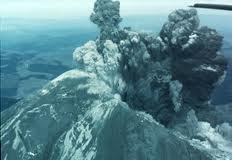Overview
Volcanoes on Earth are usually caused when hot lava, volcanic ash, and gases escape from chambers below the crust. Although many volcanic mountains have cones with craters, other types of volcanoes exist. Volcanic activity occurs on land, under the sea, and elsewhere in the Solar System and beyond.
Formation of Magma
Temperatures are hot enough in the upper mantle that rock melts and becomes liquid under high pressure. In areas that are near the boundaries of tectonic plates, called subduction zones, friction and increased pressure combine to form large amounts of magma. Under the ocean, water forms steam that melts tock even further. Liquid magma is lighter than solid rock, so it tends to rise and find its way to the surface through volcanic vents.
Types of Volcanoes
Many volcanoes have cones and deep craters at the summit, but they are not the only type. Some volcano vents form deep fissures, creating places from which lava oozes. Fissure vents can also belch steam. Shield volcanoes, such as Mauna Loa in Hawaii, have sides that slope gently and cover a large area. Lava domes often form in mounds during larger eruptions, such as the 1980 eruption of Mt. St. Helens in Washington State. Lassen Peak is also a lava dome. Composite volcanoes form in steep layers from periodic eruptions, so that layers of hardened ash and lava alternate with layers of basalt and other types of igneous rock. They are very common, found in the Cascade Range and the central Andes; the Aleutian Islands and Japan.
Explosive Eruptions
The most destructive volcanic eruptions have been explosive. For example, the 1991 eruption of Mt. Pinatubo in the Philippines produced a cloud of ash hundreds of miles across, massive earthquakes, and avalanches of gases and mud. It was one of the largest volcanic eruptions of the 20th century. The Mt. St. Helens eruption, Washington State, on May 18, 1980, produced a huge landslide and violent pyroclastic flows of superheated ash, pumice, and hot volcanic gases. The pyroclastic flow, a current of volcanic gases, rock, and ash, can reach speeds of 700 km per hour. The direct blast of Mt. St. Helens reached a force of 24 Megatons of TNT.
Lava Flows
Lava flows are non-explosive eruptions, such as occur through vents in Iceland and in Hawaii. In contrast to more explosive eruptions, the lava contains more basalt and flows very slowly. Molten lava floods build up fields of lava. In Hawaii, types of lava are called by different names depending on their texture. Mount Kilauea, in Hawai’i Volcanoes National Park, has erupted in slow-moving lava flows since 1983.
Interested in science tutoring services? Learn more about how we are assisting thousands of students each academic year.
SchoolTutoring Academy is the premier educational services company for K-12 and college students. We offer tutoring programs for students in K-12, AP classes, and college. To learn more about how we help parents and students in Hilo, HI: visit Tutoring in Hilo, HI




